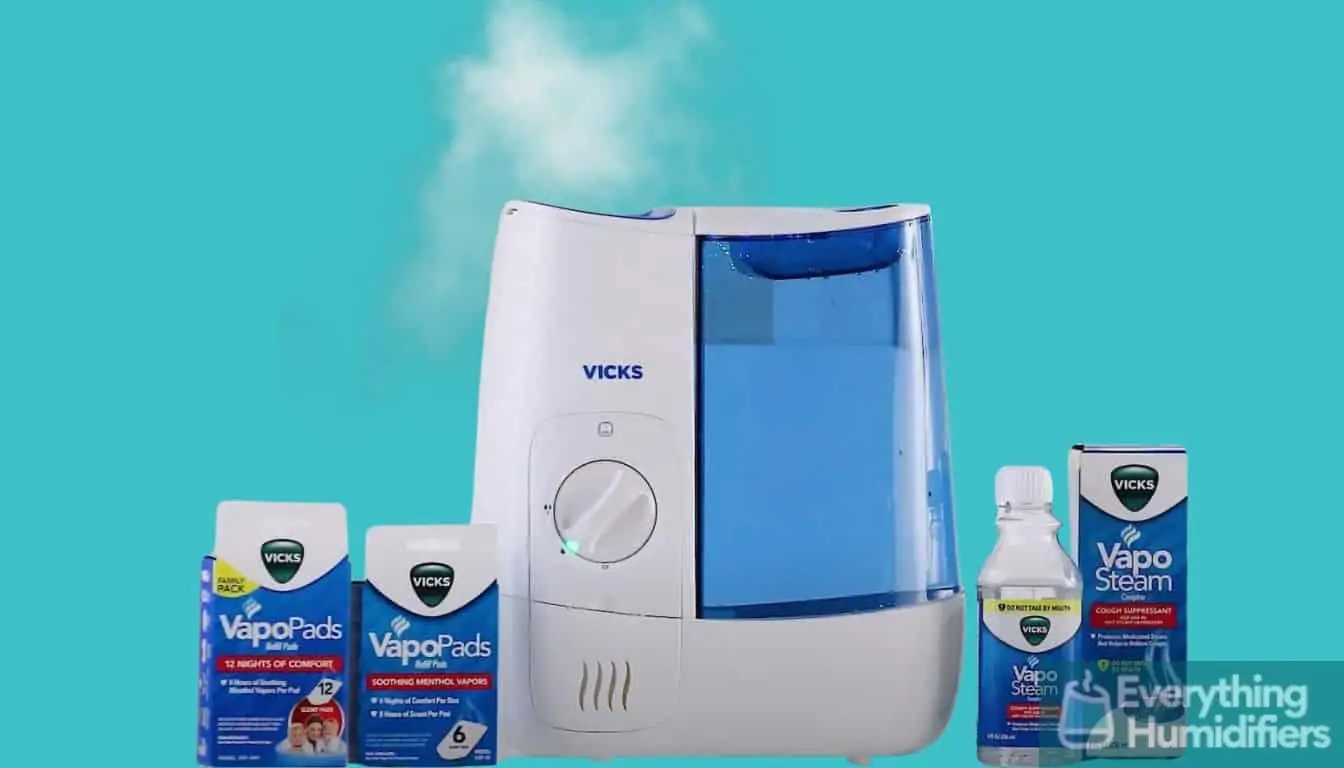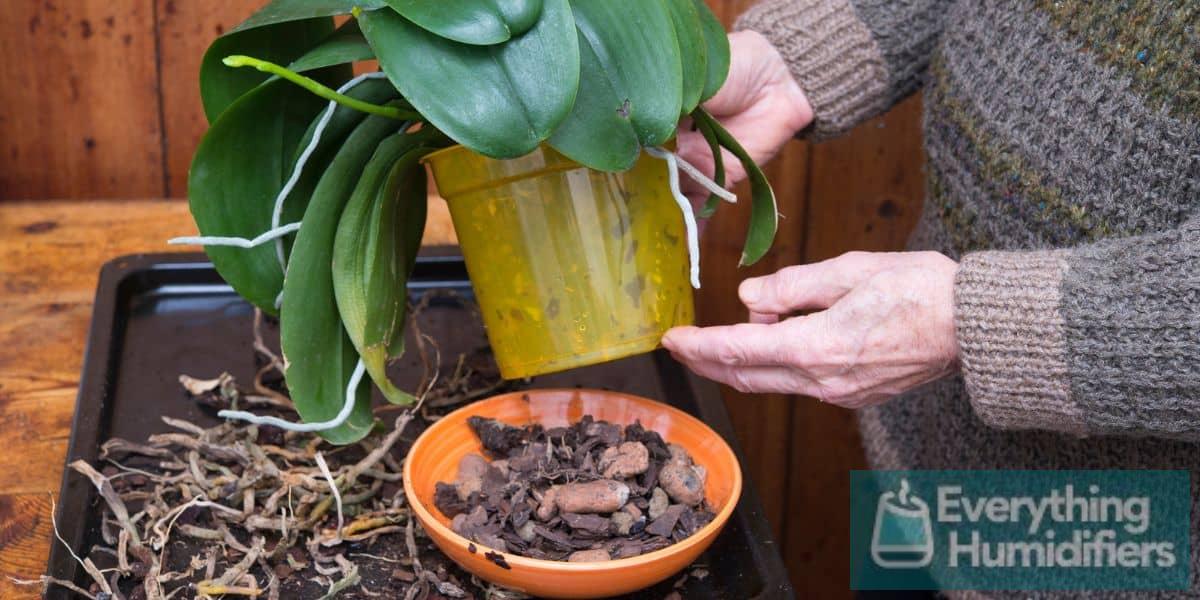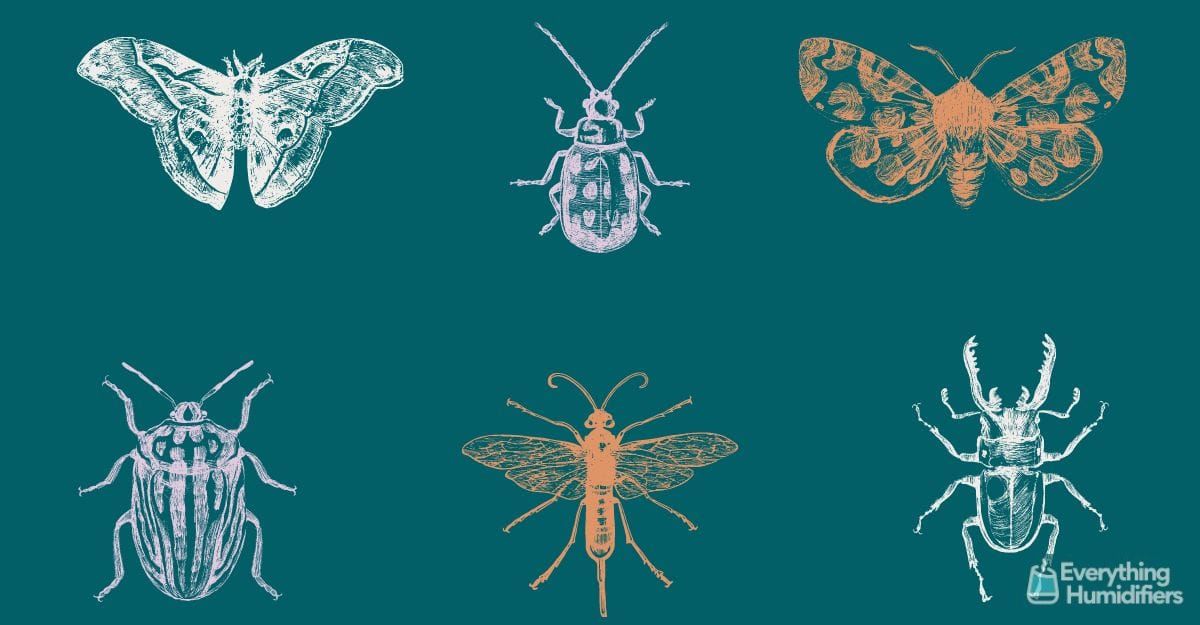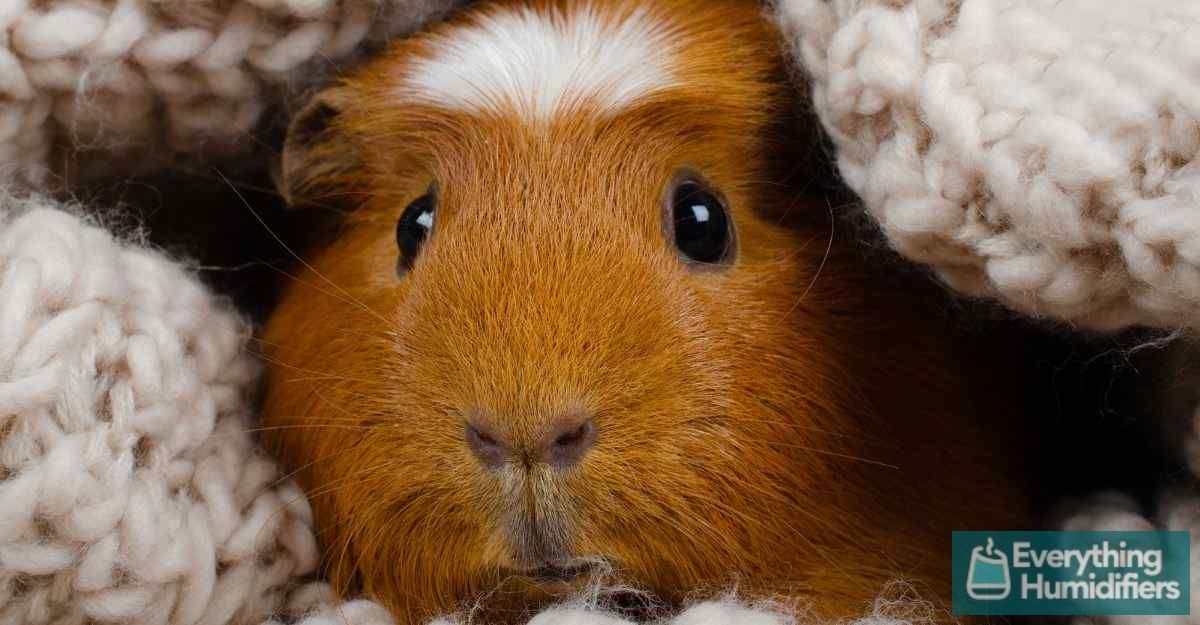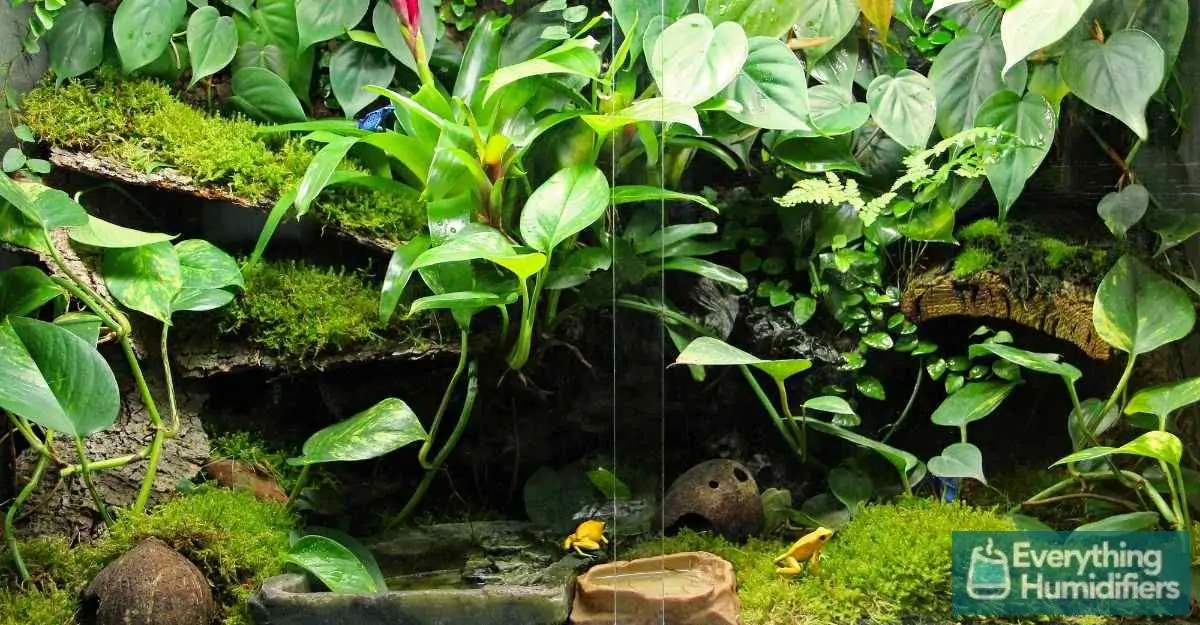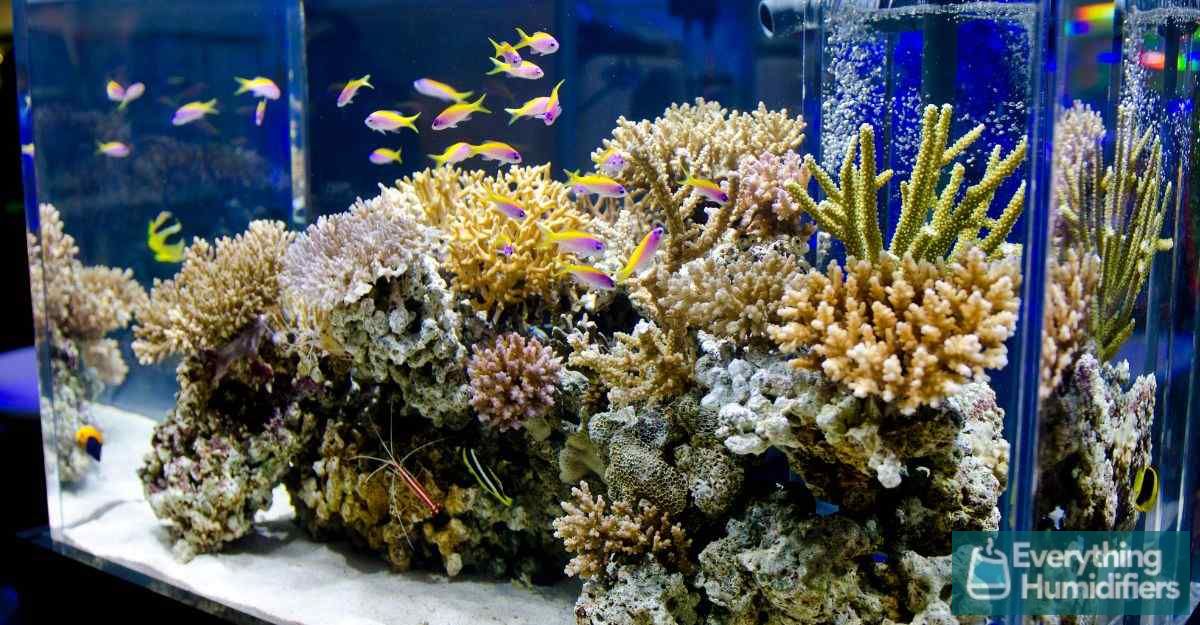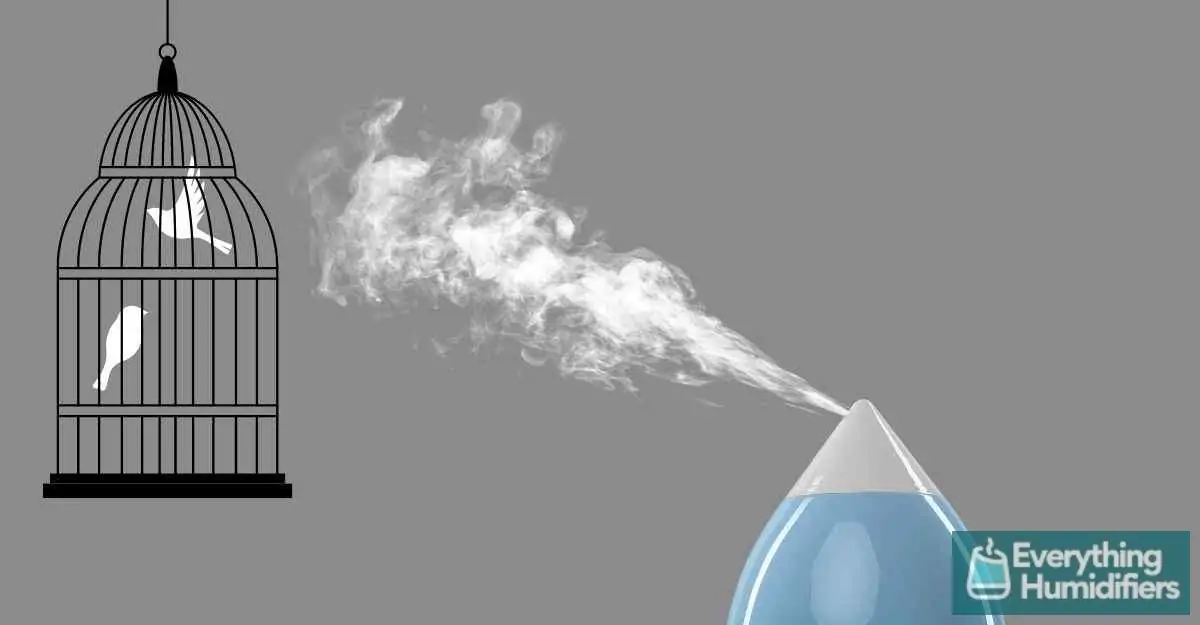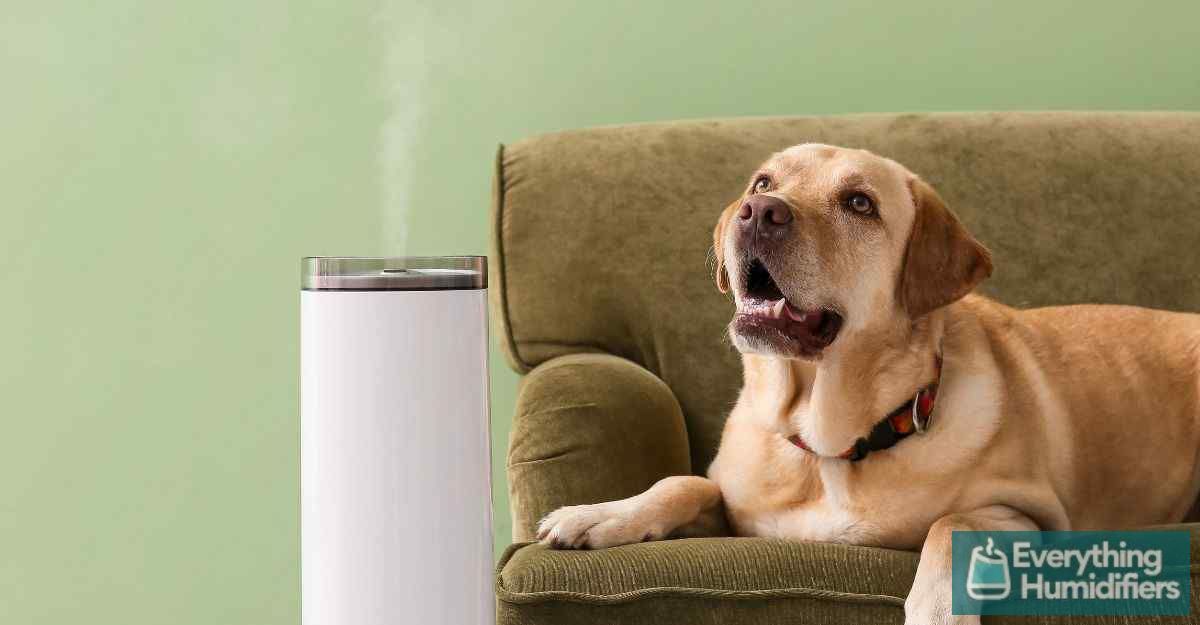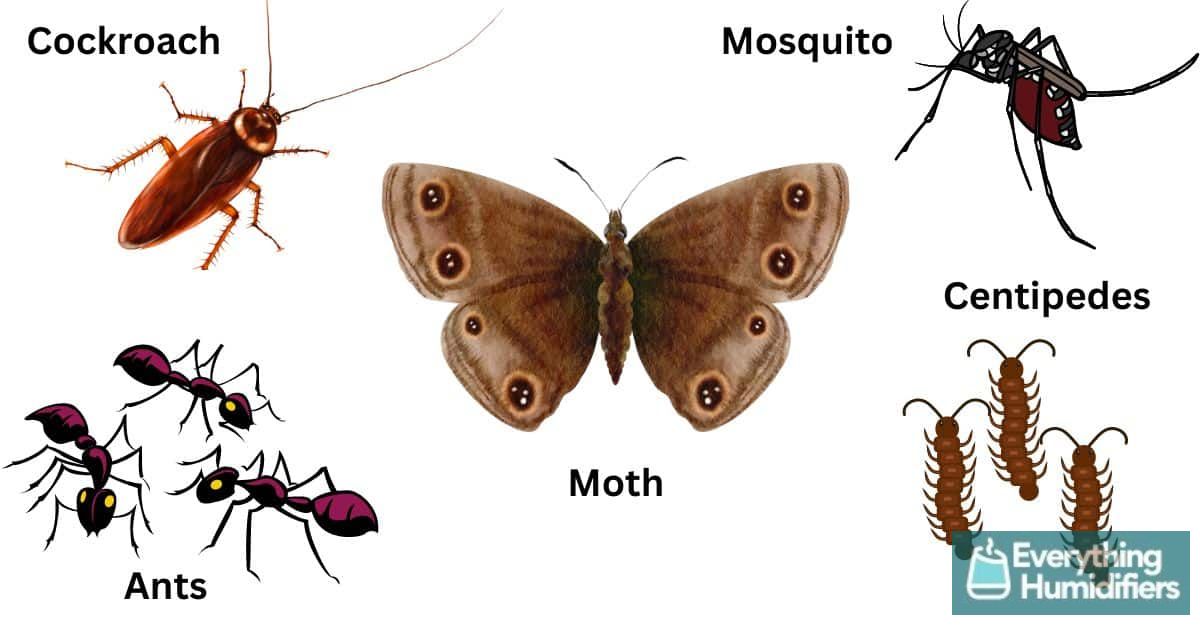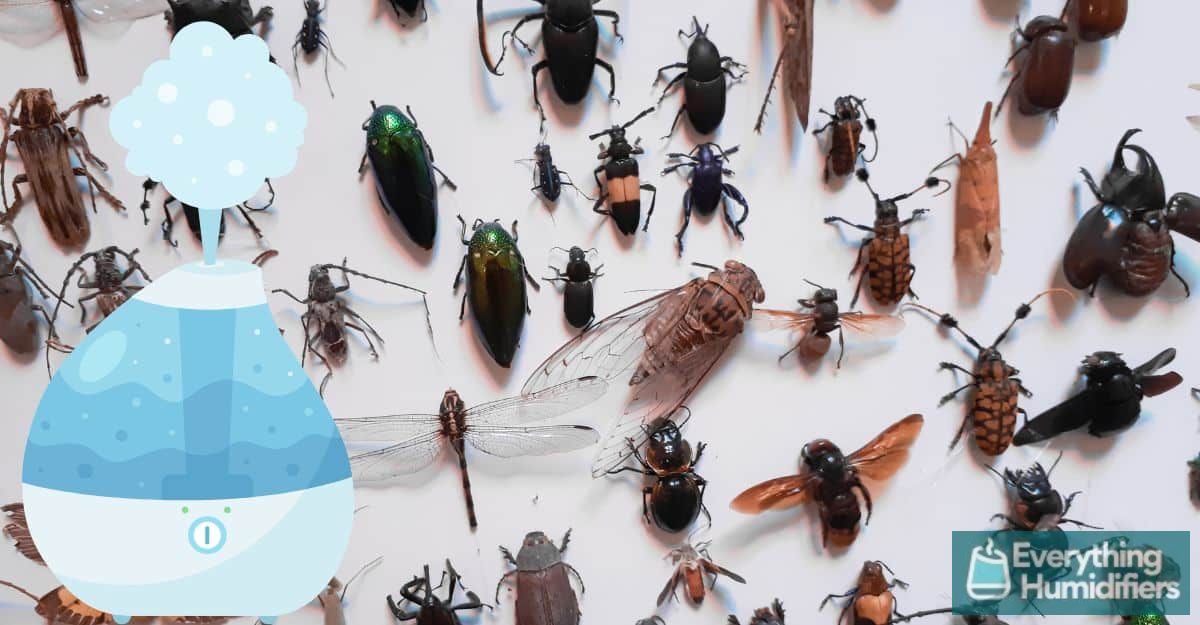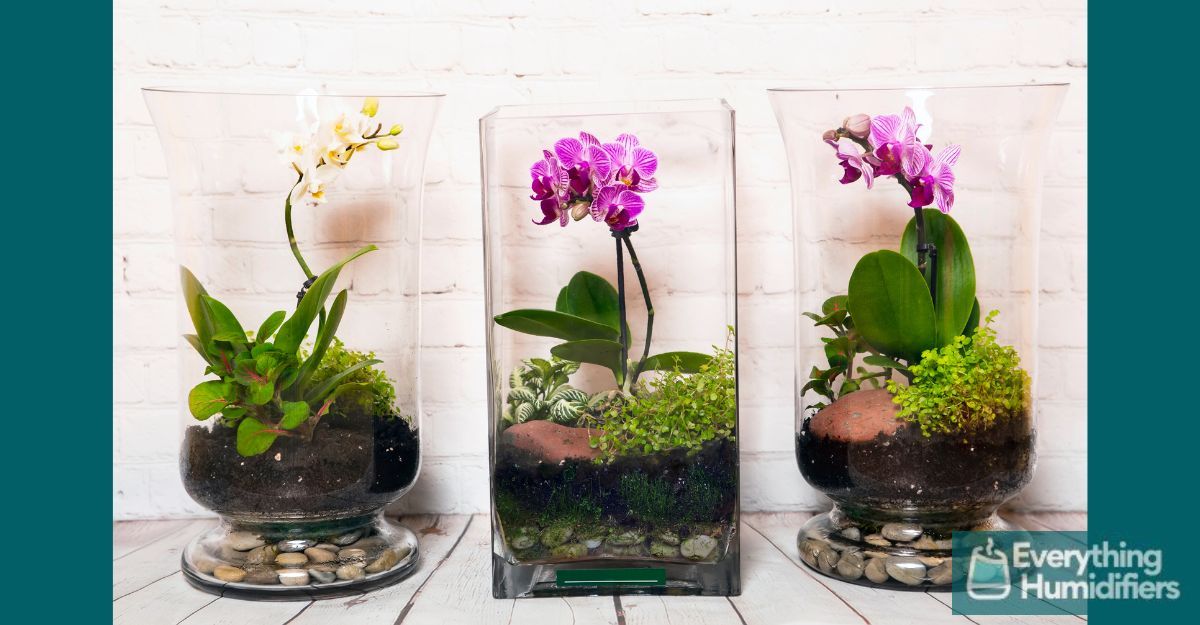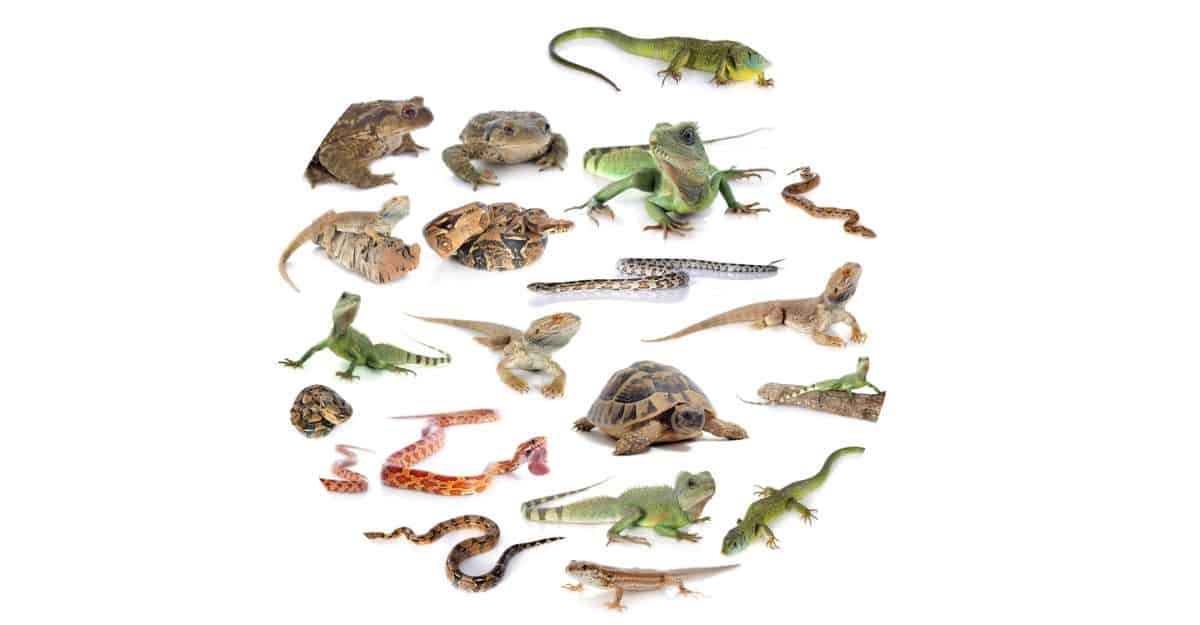If you are considering keeping an exotic pet like a lizard, snake, or turtle, checking the humidity levels in your home beforehand to ensure that you can provide a home so these creatures can survive, be comfortable and happy would be an intelligent move.
In the health of reptiles, humidity plays a vital role. But not all reptiles need a humidifier. Snakes, lizards, and some species of turtles do require higher humidity. Geckos and bearded dragons can tolerate lower humidity levels and do not require a humidifier.
Let’s look more closely and answer the question – Do all reptiles need a humidifier?
Table of Contents
Reptile Foggers and Humidifiers
Reptile foggers and humidifiers are a source of humidity. Designed to be kept inside your reptile enclosure, be it a vivarium, tank, cage, terrarium, vision cage, aquarium, plastic, or glass cage.
They increase the humidity in your reptile’s enclosure, creating conditions close to the creature’s natural habitat.
Reptile humidifiers and foggers come in different types:
Misters – These systems generate a fine mist of water to increase the humidity in a reptile enclosure.
Foggers – This device produces a visible mist or fog to increase humidity levels.
Ultrasonic humidifiers – Ultrasonic vibrations break water into tiny droplets released into the air.
Automatic misting systems – A system automatically sprays a fine water mist at set intervals to maintain humidity levels.
In addition to maintaining proper humidity levels, monitoring the overall conditions within the reptile enclosure is crucial.
This monitoring includes:
- Regularly checking and adjusting the temperature.
- Ensuring proper ventilation.
- Providing suitable substrates or materials that can retain moisture.
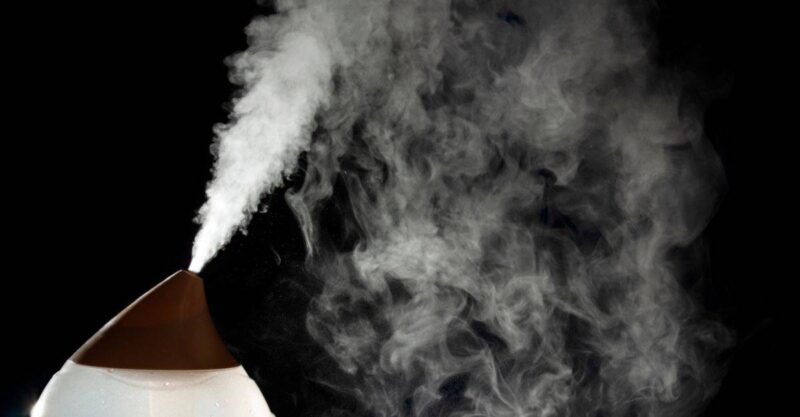
What to Consider in the Best Reptile Foggers
If you’re a reptile owner, a high-quality reptile fogger is one of the most important things you’ll need. A fogger is an essential tool that helps maintain the ideal humidity level inside your pet’s enclosure.
When shopping for a reptile fogger, find the perfect one to meet your pet’s needs.
Consider the following:
- The mist output level. Make sure that the device can produce an adequate amount of mist that will cover the entire enclosure.
- Check the size and capacity of the tank. The larger the water tank, the less often you’ll need to refill it.
- Noise level. You don’t want a noisy fogger that might disturb you or your pet’s peace.
- Durability
- Ease of use
- Cleaning requirements
Why is humidity important for reptiles?
Many reptiles live in regions that have naturally high humidity. It is essential to recreate these conditions for your type of reptile.
Humidity is vital for reptiles because:
- it helps them regulate their hydration levels
- aids in the proper shedding of their skin
- supports their respiratory health
- it plays a vital role in maintaining the reptiles’ immune system
- prevents dehydration
Reptiles that inhabit arid regions require lower humidity levels, while those dwelling in lush environments need higher humidity.
Reptiles may become dehydrated without adequate humidity, resulting in illness or even death.
Additionally, reptiles living in dry environments may experience difficulties shedding their skin, leading to skin infections and health problems.
Therefore, it’s crucial to maintain the correct humidity levels in your reptile’s habitat, depending on their species and environmental needs.
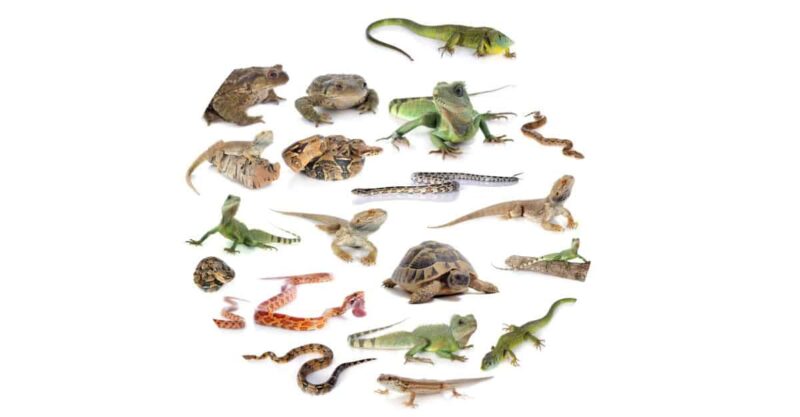
Signs That Your Reptile Needs a Humidifier
Look out for signs indicating that your pet is suffering from low humidity.
Unable to shed skin
One of the reptiles’ most noticeable signs of inadequate humidity is difficulties during shedding.
Observing your reptile with dry, flaky, or stuck shed skin may indicate a need for increased humidity in their enclosure.
Reptiles shed their skin to promote growth, remove old skin, and eliminate parasites.
During the shedding process, the outer layer of skin comes off, taking any parasites with it. This process also leaves behind a clean and healthy surface of skin for the reptile.
Shedding is a normal and essential process for reptiles to maintain a healthy and functional outer layer of skin.
Respiratory issues
It could indicate low humidity levels if you observe your reptile wheezing, gasping for air, or displaying other signs of respiratory distress.
Dry air will irritate their respiratory system and cause infections.
Sunken or dull eyes
Dehydrated reptiles can display signs of sunken or dull eyes.
Lackluster skin
Low humidity causes reptiles to have dry and lackluster skin. Their skin may lose elasticity and appear less vibrant or healthy.
Increased drinking or soaking behavior
Reptiles may exhibit excessive drinking or soaking behaviors when they lack sufficient humidity.
They may spend more time in their water dish, trying to hydrate themselves through soaking.

Let’s look at some specific reptiles that need high humidity levels
High humidity is above the comfortable indoor humidity range between 30% and 50%, recommended by the United States Environmental Protection Agency (EPA).
It is reasonable to expect that a reptile requiring humidity above 50% would require some form of humidity in its tank or enclosure.
As with humans, reptiles may require different humidity levels at different times of the year.
Monitoring regularly with your hygrometer and watching for telltale signs will assist you in keeping your reptiles comfortable.
Below is a table of suggested humidity levels gathered from various sources, with additional information in the paragraphs below.
| Reptile Type | Suggested Humidity |
|---|---|
| Crested Geckos | 40% to 50% with a boost to 70% twice a day |
| Ball Python | 50% to 60% |
| Red-Eared Sliders (Turtle) | around 70% in the land area |
| Boa Constrictor | 50% to 70% |
| Chameleons | 50% to 70% |
| Green Anole Lizards | 60% to 70% |
| Western Painted Turtles | 60% to 70% |
| Green Tree Python | 50% to 80% |
| Eastern Box Turtles | above 80% |
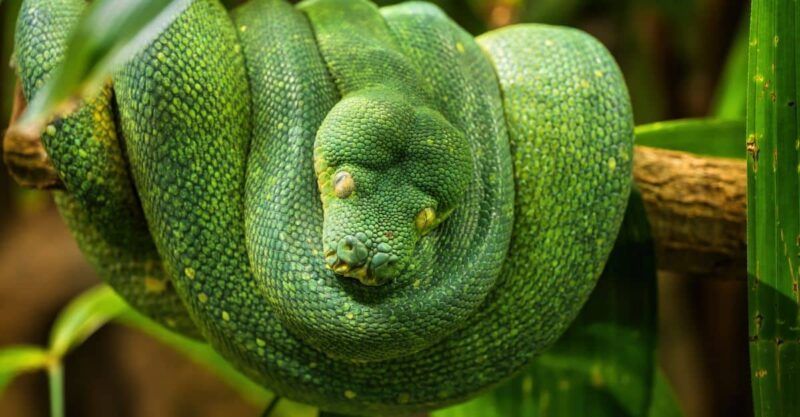
Snakes
Snakes have a unique respiratory system that makes humidity crucial for their well-being.
Unlike mammals, snakes don’t have vocal cords or a diaphragm to generate airflow. Instead, they rely on a combination of muscular contractions and the expansion of their lung cavity to draw air into their lungs. This breathing process is called “glottis breathing.”
When the humidity is too low, the respiratory membranes become dehydrated and less efficient.
Here are common pet snakes and the optimum humidity levels:
Ball Pythons (Python regius) – Native to the African rainforests, ball pythons require moderate to high humidity levels, ranging from 50% to 60%.
Green Tree Pythons (Morelia viridis) – Found in the rainforests of New Guinea and Indonesia, green tree pythons need high humidity levels, typically ranging from 50% to 80%.
Boa Constrictors (Boa constrictors) – These are native to various habitats, including tropical rainforests and semi-arid regions.
While they are more adaptable to varying humidity levels, they do best in enclosures, with around 50% to 70% humidity.
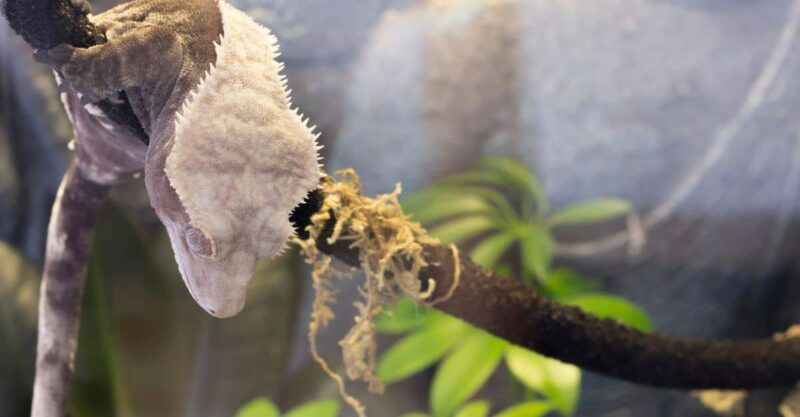
Lizards
Lizards breathe through a system of lungs and rely on efficient respiration to meet their oxygen needs.
While lizards do not have a diaphragm like mammals, they use muscles around their ribcage to expand and contract their lungs, facilitating the exchange of gases.
Adequate humidity is essential for lizards to maintain healthy respiration. Proper humidity ensures their respiratory membranes stay moist and functional, allowing for efficient gas exchange.
Here are common pet lizards and the optimum humidity levels:
Chameleons (Chamaeleonidae family) – Known for their ability to change color, they are native to tropical and subtropical regions. They require higher humidity levels, typically 50% to 70%.
Maintaining proper humidity is crucial for hydration, respiratory health, and shedding.
Crested Geckos (Correlophus ciliatus) – Native to New Caledonia, crested geckos are arboreal lizards (meaning they live in trees).
They require moderate to high humidity levels ranging from 40% to 50% and boosting to 70% twice daily.
Adequate humidity is essential for their skin health, hydration, and shedding. Read this article from Internet Reptile, all about Crested Geckos.
Green Anoles (Anolis carolinensis): Green anoles, also known as American chameleons, are commonly kept as pets. They originate from the southeastern United States and require moderate humidity between 60% and 70%.
Sufficient humidity helps with hydration, shedding, and overall well-being.
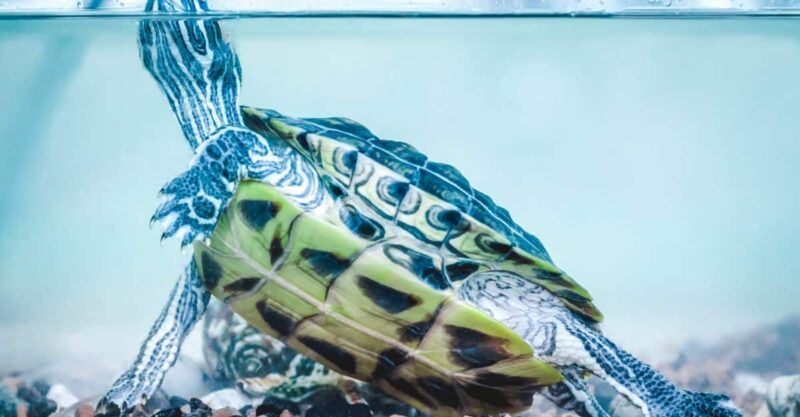
Turtles
Turtles have a unique respiratory system involving specialized breathing adaptations in aquatic and semi-aquatic environments.
While they possess lungs for breathing, turtles rely on supplemental respiration through specialized structures known as cloacal respiration.
These structures allow for gas exchange with the surrounding water or humid environments.
Here are common pet turtles and their optimum humidity levels:
Red-Eared Sliders (Trachemys scripta elegans) are semi-aquatic turtles commonly kept as pets.
They require both water and land areas in their enclosure. The humidity level for their land area should be around 70%.
Western Painted Turtles (Chrysemys picta belli) are semi-aquatic turtles. They thrive in moderate humidity levels of around 60% to 70%. Read this interesting article from All Turtles about Western Painted Turtles.
Eastern Box Turtles (Terrapene carolina carolina) – Eastern box turtles are terrestrial turtles found in wooded areas of North America. They like a high humidity level of above 80%.
Reptiles That Typically Don’t Need a Humidifier and prefer low humidity
Diverse and fascinating, reptiles are a group of animals that come in many varieties, each with unique care requirements.
Some reptiles, like geckos and bearded dragons, are known for being relatively low maintenance and are generally easy to care for. One reason for this is that they typically don’t need a humidifier.
These species come from arid regions that don’t have high humidity levels, so they have evolved to tolerate drier conditions of 30% to 50% humidity, which means that their enclosures don’t need to be misted regularly or have a separate humidifier attached.
However, it’s essential to monitor the humidity levels in their enclosure, as it can still become too dry, leading to shedding problems and respiratory infections.
Providing a shallow water dish can help maintain the humidity levels they require.
Overall, geckos and bearded dragons are amazing reptiles for first-time owners and are much easier to care for than other, more high-maintenance species.

Do all Reptiles need a humidifier? – FAQ
1. What is a humidifier for reptiles?
A humidifier for reptiles is a device that helps maintain proper humidity in your reptile’s enclosure. It works by adding moisture to the air, which is essential for the health of your pet reptiles.
2. Do all reptiles need a humidifier?
Not all reptiles need a humidifier, but many reptiles do require a high level of humidity in their enclosure. Reptiles that come from tropical or humid regions, such as snakes and some amphibians, need a humid environment to stay healthy and happy.
3. What happens if the humidity level in a reptile enclosure is too low?
If the humidity level in a reptile enclosure is too low, it can cause a variety of health problems for your pet reptile.
This includes issues with shedding, respiratory problems, and dehydration. It can also lead to stress and a weakened immune system, which can make your pet more susceptible to diseases.
4. Can you mist the tank instead of using a humidifier?
Yes, you can mist the tank instead of using a humidifier. Misting can help add humidity to the enclosure, but it is not as effective as using a humidifier.
Misting can also be time-consuming and tedious, especially if you have a large tank.
A humidifier for reptiles is a more efficient and effective way to maintain proper humidity levels in your pet’s enclosure.
5. What is the best type of humidifier for reptiles?
The best type of humidifier for reptiles depends on the size of your enclosure and the type of reptile you have.
Some of the most popular options include ultrasonic humidifiers, large capacity tank humidifiers, and reptile foggers.
It’s important to choose a humidifier that is the appropriate size for your enclosure and has the right level of fog output for the humidity needs of your pet.
6. What is the proper humidity level for a reptile enclosure?
The proper humidity level for a reptile enclosure varies depending on the type of reptile you have.
In general, most pet reptiles need a humidity level of 50-60%. However, some species may require higher or lower levels of humidity to stay healthy.
Look out for signs that your reptile needs a humidifier!
Reptiles require a specific level of humidity to thrive in their enclosures. If the humidity levels drop too low, it could lead to some problems for your pet reptile.
If your reptile’s skin looks dry or flaky, it could indicate that the humidity in its environment is too low.
Additionally, if your reptile is having difficulty shedding, check the humidity level in its enclosure.
Keeping a close eye on your reptile’s behavior and appearance can help you identify signs that they may need more humidity in their enclosure.
Your reptile can thrive and lead a healthy, happy life with proper care.
Of course, humidity may not be able to keep your pet happy if there is another problem. If the symptoms do not improve with increased humidity, seek advice.
Local veterinarians or pet stores can be invaluable for animals in your area.
You can also seek guidance from herpetologists or experienced reptile keepers.


